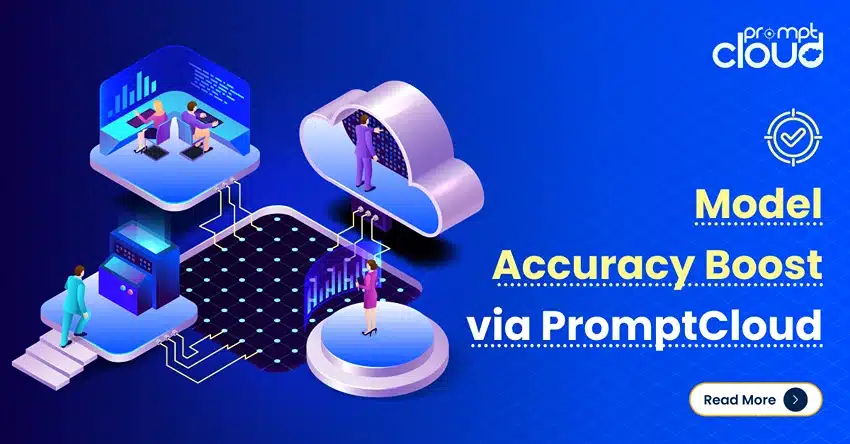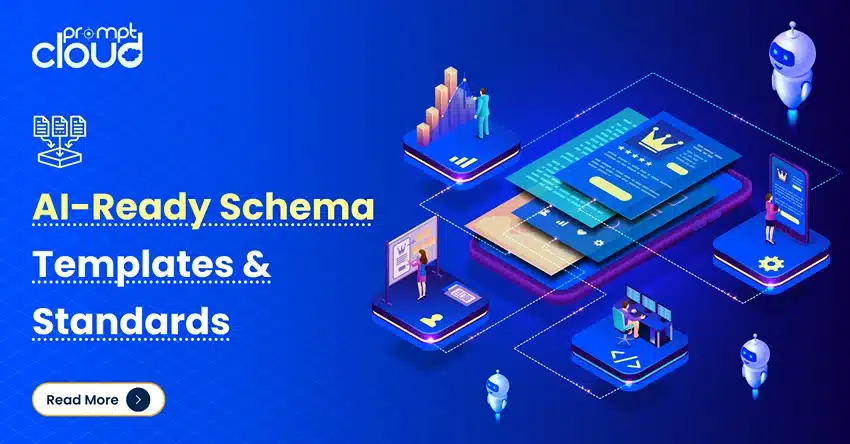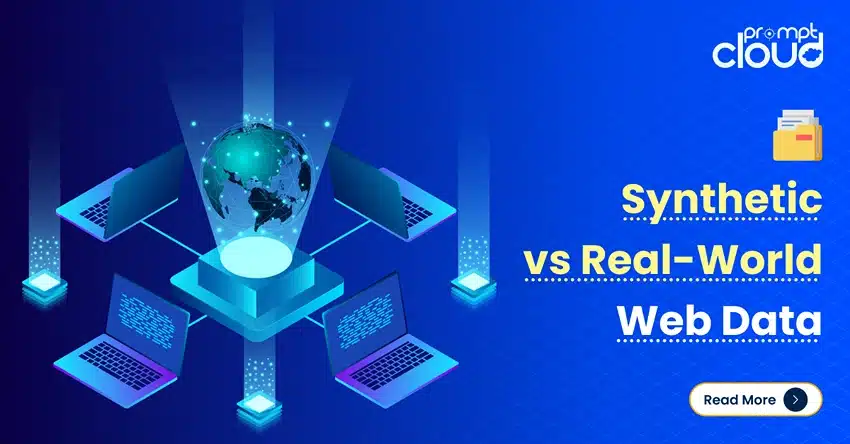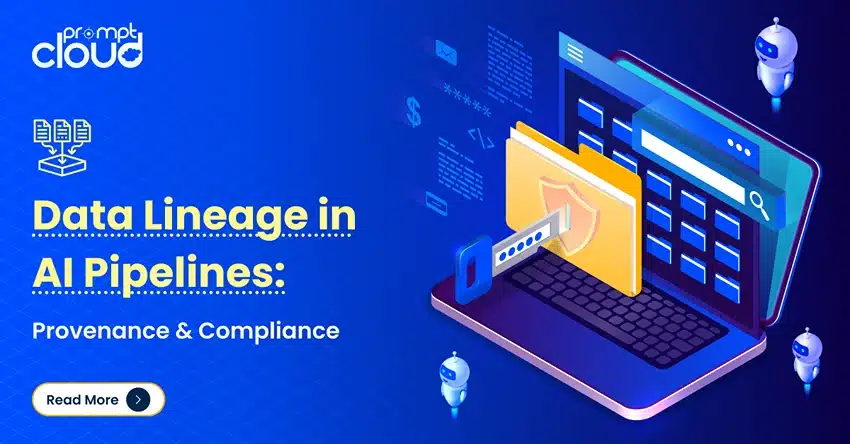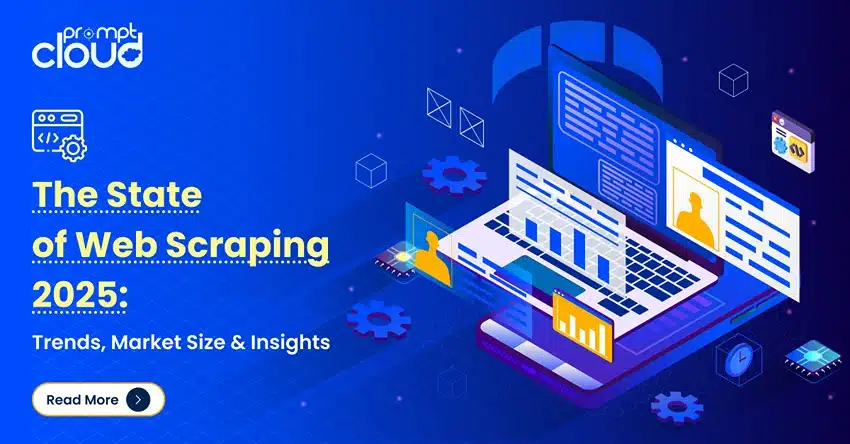
You’re staring at a dashboard full of useful data. Maybe it’s a competitor’s price list, a bunch of job listings, or transaction history behind a login. The data is right there on the screen—but there’s no download button, no export, no API.
So what do you do? You could copy-paste it line by line, but that’s not sustainable. You need something faster. Smarter. That’s where screen scraping comes in.
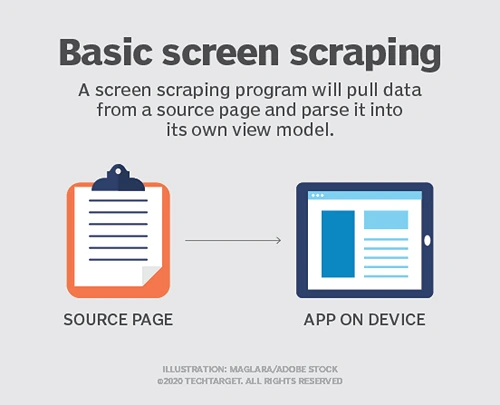
Image Source: TechTarget
Screen scraping is basically teaching a machine to look at a screen the way a person does. It doesn’t care about the backend code or APIs. If it’s visible to you, it’s readable by the bot. It scrolls, clicks, highlights, copies—just like a human would—but it never gets tired and doesn’t make typos.
It’s not new. Banks have been fighting it for years, especially when budgeting apps started logging into user accounts (with permission) and scraping balance info. In fact, a lot of Python screen scraping scripts floating around today were built for exactly that.
The technique also shows up in industries where data is locked behind legacy systems or platforms that don’t play nice with developers. Some CRMs and ERPs have no API access at all. But screen scrapers can still grab the info—think of it as a digital workaround.
Tools like Instant Data Scraper have made this process so simple that even someone without a tech background can do it with a few clicks. That’s exactly why it’s getting attention—for better and worse.
Because the real question isn’t can you scrape that screen. It’s should you?
We’ll get into that next—because the legality of screen scraping isn’t black or white. It lives somewhere in the gray.
Is Screen Scraping Legal?
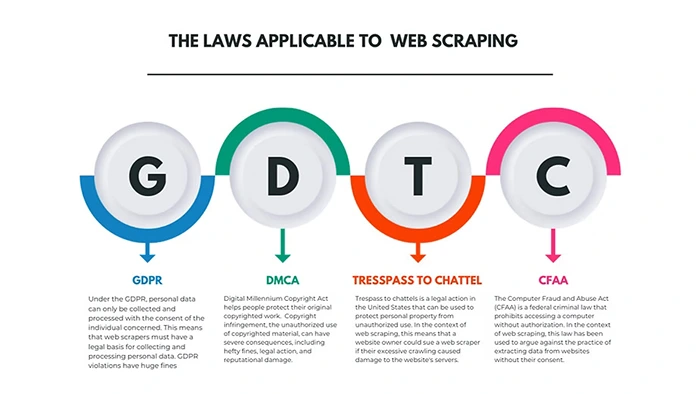
Image Source: Datahut
If you’re here for a clear yes or no, let’s save you the suspense—there isn’t one.
The legality of screen scraping depends entirely on context. Not just what you’re scraping, but how, why, and where. It’s messy, and anyone who tells you it’s completely safe—or totally illegal—is either oversimplifying it or trying to sell you something.
It’s Public, So It’s Fine… Right?
Wrong. This is where most teams slip up. Just because something is visible on a screen doesn’t mean it’s free to take. A human reading it is one thing. A bot copying thousands of rows every minute? That’s different.
Think of it this way: walking into a store and writing down prices isn’t illegal. But showing up every morning with a clipboard and photographing every product without permission? That’s going to raise eyebrows fast. Screen scraping at scale feels the same to platforms.
That LinkedIn Case Everyone Talks About
You’ve probably heard of hiQ Labs vs. LinkedIn—the case that basically set the tone for scraping discussions. hiQ was scraping public LinkedIn profiles to power its analytics platform. LinkedIn tried to block them. It went to court.
Eventually, the U.S. Ninth Circuit sided with hiQ, saying scraping public data wasn’t automatically a violation of the Computer Fraud and Abuse Act (CFAA). Sounds like a green light for scrapers, right?
Not quite. The court said public data scraping might be allowed under certain conditions. But anything behind logins, paywalls, or access restrictions? Still off-limits. If your screen scraper touches anything even slightly gated, you’re walking on legal thin ice.
Terms of Service
Most websites spell out their rules in their Terms of Service (TOS)—and a lot of them say: “Don’t scrape.” Ignoring that might not send you to jail, but it can lead to lawsuits, bans, or getting cut off from the data altogether.
You can argue that “no one reads TOS anyway.” Sure. But courts do.
Some take violations seriously as breach of contract. Others treat it as more of a slap on the wrist. Either way, if you’re using screen scraping to fuel a commercial product or make business decisions, this stuff matters. A lot.
What About Outside the U.S.?
Here’s where things get even more tangled.
- In the EU, you have to consider GDPR. If the data includes anything personally identifiable—even public LinkedIn info—you better have a lawful basis for collecting it. “Because it’s interesting” isn’t one.
- In India, the laws aren’t crystal clear yet. But courts have shown they’re willing to act if scraping affects competition, privacy, or intellectual property.
- In Canada and Australia, scraping data that’s copyrighted or behind access controls can trigger enforcement, especially if it’s being used for commercial gain.
So no, there’s no “safe zone” where screen scraping is universally allowed. Your safest bet is always to ask: Am I collecting data in a way the platform or the user would reasonably expect?
If the answer is “probably not,” it’s time to rethink your approach.
Ethical Boundaries in Screen Scraping: Just Because You Can Doesn’t Mean You Should
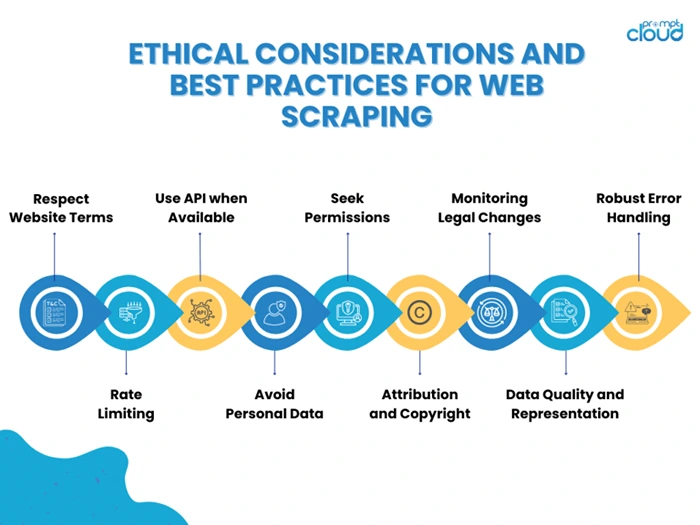
Let’s say the law isn’t stopping you. No login walls, no personal data, no angry legal letters—you’re in the clear.
Now ask yourself something else: Should you still be doing this?
This is where legality ends and ethics begins. Because screen scraping might be technically allowed, but how you use it—and how it affects others—still matters. A lot.
Are You Respecting the Intent of the Platform?
Here’s the thing most people ignore: platforms don’t just put up login barriers or rate limits to be annoying. They do it to protect user experience, prevent server overload, and control how their data gets used.
If your screen scraper is hammering a site every 30 seconds, you’re not being clever—you’re being a problem. At that point, you’re not just gathering data, you’re interfering with how the platform runs.
Ethical scraping means acting like a respectful guest. You’re not invisible just because you’re a bot.
Are You Being Transparent With Users?
If you’re scraping on behalf of a user—like pulling their account data into your app—you’d better have clear consent. Not buried in a 45-page terms document. Real consent. Screen scraping someone’s data without telling them exactly what you’re doing and why is a massive breach of trust, even if it’s technically allowed.
Fintech apps get this right (mostly). They walk users through it. “We’ll log into your bank account using your credentials and fetch transaction data.” It’s transparent. It’s opt-in. And most importantly, it respects user control.
That’s the standard.
Are You Hoarding or Helping?
There’s a fine line between competitive intelligence and digital hoarding. If your use case is scraping a competitor’s site just to undercut their pricing or flood the market with lookalike listings, don’t pretend it’s innovation. It’s not. It’s copycat behavior, and everyone sees through it.
Compare that with scraping data for research, analytics, or building something users actually want—and you’ll find yourself on far stronger ethical ground.
Again: what’s your intention?
Are You Prepared for the Consequences?
Ethics also means being ready to own the fallout. If a site blocks your scraper, rate-limits your IPs, or sends a cease-and-desist, how do you respond?
Do you escalate with more aggressive scraping tactics, or do you back off and reconsider your approach?
Ethical screen scraping doesn’t mean being timid. But it does mean being accountable. You built a bot. You sent it out into the world. If it causes problems, you don’t get to hide behind the “it’s just code” excuse.
To be clear: screen scraping isn’t evil. It’s just a tool. But like any tool, it reflects the intent of whoever’s holding it. If you use it to create value, solve a problem, or empower users—it’s probably a net positive. If you’re using it to shortcut effort, sidestep fair competition, or squeeze someone else’s work for your gain—that’s a different story.
Practical Use Cases of Screen Scraping in the Real World
Strip away the hype and the controversy, and screen scraping is still one of the most practical, roll-up-your-sleeves tools in the data toolbox. It exists because sometimes, there’s just no other way to get the information you need. APIs don’t always exist. Data dumps are rarely updated. And not every system was built with access in mind.
So where does screen scraping really shine? Let’s look at a few places where it solves real problems without stepping on legal landmines.
1. Financial Aggregation Tools
This is one of the most mature and accepted uses of screen scraping. Think budgeting apps like Mint, YNAB, or fintech services that consolidate all your accounts into one dashboard.
Many banks still don’t offer open APIs, especially smaller or regional ones. So these apps use Python screen scraping scripts to log in on the user’s behalf (with full consent), read the transaction data, and present it in a cleaner, more useful format.
It’s not perfect, but it works—and it’s built around clear user permissions, which keeps it on the ethical side of the fence.
2. E-commerce Price Monitoring
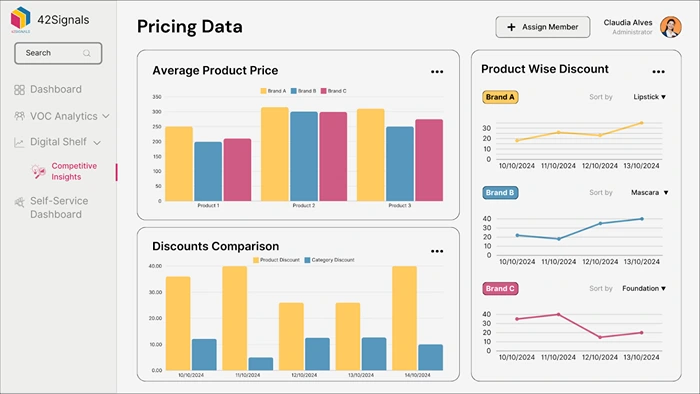
Image Source: 42Signals
You know this one. Whether it’s tracking prices across Amazon, Flipkart, or niche retailers, businesses use screen scrapers to watch their competitors—because not everyone has clean, API-fed product feeds.
Retailers and pricing analysts use this data for pricing strategies, promotional timing, and competitive benchmarking. And when done responsibly—without flooding sites or violating TOS—it can offer huge value without creating friction.
This is especially useful in countries where automated scraping is still legally ambiguous but tolerated when used non-aggressively.
3. Job Market Intelligence
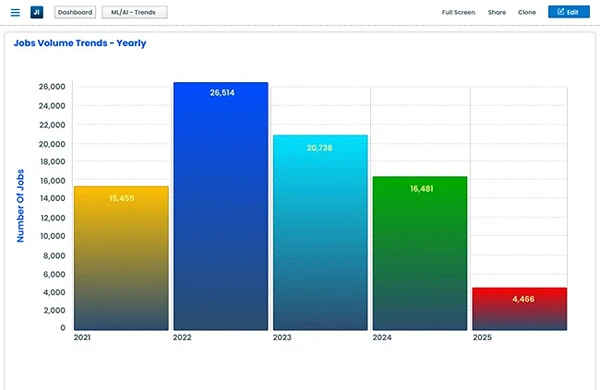
Image Source: JobsPikr
Companies like PromptCloud (yes, like us) help clients monitor online job boards, career sites, and company portals to analyze hiring trends.
But guess what? Not every job portal wants to be scraped. Some post jobs only in front-facing UIs. So if a client needs fresh, high-volume job data and there’s no API access, screen scraping fills that gap.
Again, the key is doing it with care—throttling requests, staying within platform rules, and not scraping data behind logins unless it’s yours or you’ve got permission.
4. Legacy System Integration
Not all data lives on modern, cloud-based apps. In industries like insurance, government, or logistics, a ton of information still lives in legacy desktop systems—many of which have no way to export data easily.
Here, screen scraping is often used internally to pull data from one system into another. You’re not scraping a competitor or a public site. You’re just building a bridge where the software never built one.
This kind of screen scraper is less about grabbing outside data and more about making your own systems usable again.
5. Real-Time Monitoring Dashboards
In operations or IT, teams sometimes need to monitor third-party systems that don’t offer proper integrations. For example, think of a logistics team that needs live data from a vendor’s shipment tracking site.
There’s no export button. But the data’s visible on-screen.
So, they build a lightweight scraper that runs every few minutes and pipes that data into their own dashboard. Not flashy, but incredibly useful—and legally safer when done within partnership agreements.
Notice a pattern here? The best screen scraping use cases all revolve around:
- Data that’s already public or user-owned
- Clear intent and transparency
- Responsible, non-disruptive access
- Filling a gap that APIs or integrations just don’t cover
Screen scraping is not some rogue tool used by shady startups to steal data. It’s a workaround—sometimes the only one—for making disconnected systems talk to each other. Used responsibly, it doesn’t just extract data. It adds real operational value.
Now let’s talk about how to actually do screen scraping without ending up in legal trouble or getting your IP banned.
Best Practices for Screen Scraping Without Burning Bridges
If you’re going to use screen scraping, you’ve got to do it right. That means more than just making sure your code works. It means knowing what lines not to cross—legally, ethically, and technically.
Here’s how to keep your screen scraping clean, useful, and out of trouble.
1. Don’t Pretend Terms of Service Don’t Matter
A lot of teams treat website terms of service like fine print—something you scroll past to get to the good stuff. But if you’re scraping a site that explicitly says “no automated access,” and you do it anyway, that’s not just risky—it’s reckless.
You might not get sued immediately. But you could get IP banned, sent a legal notice, or worse, end up in a courtroom explaining why your business depends on ignoring contracts. And if you’re building something for clients or investors, that’s a conversation you don’t want to have.
At the very least, read the terms. If something’s unclear, ask. It’s better to pause early than backpedal later.
2. Don’t Scrape Anything Behind a Login Unless You Have Permission
This one’s simple: if it’s behind a login, you need consent. Full stop.
Let’s say you’re building a finance tool that pulls in user data from banking dashboards. If your users log in and you screen scrape their data with permission? That’s fine—done right, that’s user empowerment.
But scraping account data without clear consent, or using someone else’s credentials to grab internal data? That’s crossing the line. Whether it’s legal or not, it’s not something you want associated with your brand.
3. Be the Kind of Bot That Doesn’t Break Things
Think of screen scraping like showing up at someone else’s office. Are you walking in calmly and taking notes quietly? Or are you barging in, copying everything in sight, and shouting every five seconds?
If you’re making hundreds of requests a minute, scraping aggressively, or ignoring obvious usage limits, don’t be surprised when you get blocked. Or worse—when you crash the system and end up flagged as an attack.
Use smart delays. Respect rate limits. Make your scraper act like a human, not a server-hungry vacuum.
4. Be Upfront When You Can
Most scrapers don’t announce themselves. But in some cases—especially if you’re scraping frequently or at scale—it’s smart to let the site know who you are. Identify your scraper with a custom User-Agent string. Include contact info in your request headers. Not always, not everywhere—but where it makes sense, it can go a long way.
It tells the platform, “We’re not hiding. We’re not here to cause problems. Reach out if you need to.” That’s a small move that can prevent bigger issues later.
5. Don’t Treat Proxies Like a Magic Cloak
Using proxies or rotating IPs is common in screen scraping, especially if you’re dealing with regional data or trying to avoid rate limits. That’s fine—as long as you’re not using them to sneak past protections you know you’re not supposed to.
If a site is behind a login, or blocks scraping altogether, proxies won’t change the ethics—or the risk. They might just delay the fallout.
6. Monitor Everything, Not Just the Data
Screen scraping isn’t a one-and-done setup. Websites change. Layouts shift. Content gets updated. What worked yesterday could break today.
Set up alerts for failed extractions. Monitor request counts. Track changes in structure. If you’re using screen scraping in production or relying on it for real-time insights, you need to treat it like infrastructure—not a side project.
Also, log what you’re collecting. If a question ever comes up—internally or externally—you want to be able to show what was accessed, how, and when.
Here’s the truth: screen scraping, done well, is invisible. It doesn’t trip alarms. It doesn’t get blocked. It doesn’t burn relationships. That’s not just about having better code—it’s about having better judgment.
Where PromptCloud Fits In: Screen Scraping Without the Headaches
At this point, you’re probably thinking: all this sounds great in theory, but how do you actually do screen scraping right—without ending up blocked, overwhelmed, or legally exposed?
That’s exactly where PromptCloud comes in.
We work with companies that need structured data from websites and platforms that don’t always make access easy. Sometimes there’s no API. Sometimes the data’s locked inside complicated UIs. And sometimes screen scraping is the only real option. But here’s the key difference: we don’t wing it.
PromptCloud brings three things to the table that most DIY or off-the-shelf screen scraper setups don’t:
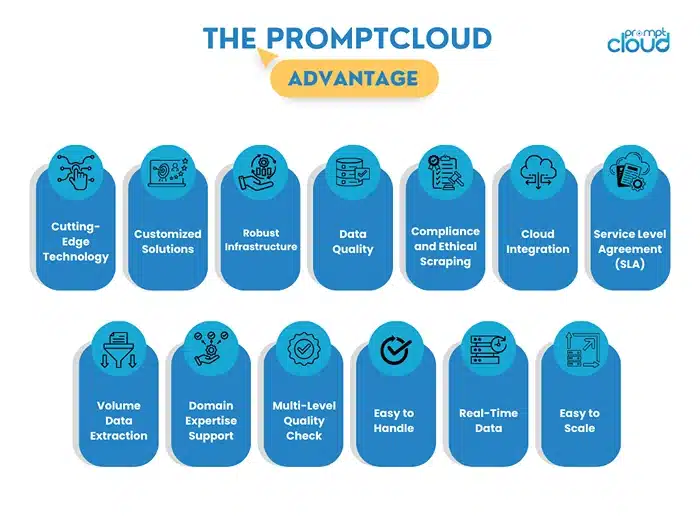
1. Compliance Comes First
We’re not just thinking about how to get the data—we’re thinking about whether we should, and how to do it responsibly. Every screen scraping project we take on is reviewed through the lens of legality, terms of service, and ethical data use. If we can’t scrape it the right way, we won’t do it. Simple as that.
2. Enterprise-Grade Stability
Most screen scraping tools break the minute a site redesigns. That’s fine for hobby projects, but not for businesses that need consistent, reliable data pipelines.
PromptCloud’s infrastructure is built to handle these changes. We monitor for layout shifts, add fallback logic, and provide ongoing maintenance so your workflows don’t go dark every time a website moves a button.
3. Humans in the Loop
Scraping isn’t just about automation—it’s also about context. Is that number a price? A review score? A stock count? We combine automation with human QA and context-awareness to make sure you’re not just collecting data—you’re collecting the right data.
So whether you’re a retailer monitoring competitors, a fintech app syncing user dashboards, or an analyst tracking market signals buried in legacy systems—PromptCloud helps you extract value without extracting risk.
And if screen scraping isn’t the right fit for your use case? We’ll be the first to tell you that, too.
Staying Ahead of Screen Scraping Risks: Compliance Isn’t a Checkbox
If there’s one thing screen scraping isn’t, it’s “set it and forget it.” Whether you’re doing it in-house or working with a vendor, compliance and risk management aren’t just tasks you tick off once during onboarding. They’re ongoing responsibilities.
Technology changes. Laws evolve. Websites update their layouts, adjust their terms, or implement new protections overnight. If you’re not paying attention, what was legal and functional last week can easily become problematic today.
Treat Screen Scraping Like a Living System
If screen scraping is part of your data strategy, treat it with the same discipline you give your core tech stack. Monitor your scripts. Keep logs. Revisit your data sources regularly. Track changes in terms of service. Audit how the data is being used downstream.
This isn’t about being paranoid—it’s about building something that lasts.
Because screen scraping done right can be powerful. It gives you access to real-time insights, fills gaps that APIs can’t, and opens up possibilities across competitive intelligence, market research, and product development.
But done sloppily? It can get you banned, blocked, or worse—embroiled in legal trouble that costs way more than the data was worth.
Build Relationships, Not Just Scripts
One of the smartest moves any business can make is shifting from adversarial scraping to cooperative data sourcing. If you rely heavily on a site for data, consider reaching out. Ask about partnerships, shared access, or even custom feeds. You’d be surprised how often companies are open to collaboration when you approach them professionally.
If that’s not possible, then at least make sure your screen scraper operates with respect. Low impact. Transparent intent. No drama.
Make Compliance a Culture, Not a Checklist
The teams that get this right aren’t just the ones with the best scrapers. They’re the ones where legal, product, engineering, and data all sit at the same table.
They ask the hard questions early. They don’t just ask “can we scrape this?”—they ask “should we?” And if the answer’s no, they find another way.
Responsible Screen Scraping Starts with the Right Partner
Screen scraping isn’t going anywhere. If anything, it’s becoming more common—because the world’s data isn’t always neatly packaged. Sometimes it lives inside dashboards, tables, or legacy tools. And sometimes, scraping is the only practical way to reach it.
But with that power comes a responsibility to use it well. Done responsibly, screen scraping can unlock insights and build better products. Done carelessly, it can damage relationships, systems, and reputations.
Know the rules. Respect the boundaries. And when in doubt—ask.
Or better yet, work with a partner who already has the answers. Contact us today!
FAQs
1. What exactly is screen scraping, and how is it different from web scraping?
Screen scraping is basically a bot copying what’s on a screen; whatever you see, it grabs.
Web scraping digs into the code behind a web page to pull data out more cleanly.
So, screen scraping sees what you see. Web scraping sees what’s behind the curtain.
2. Is screen scraping legal, or am I risking a lawsuit by doing it?
It’s not illegal by default, but it can get tricky fast. If it’s your own data or you’ve got permission, no problem. But if you’re scraping someone else’s stuff without asking — even if it’s public — you might be breaking their rules. And yeah, in some cases, that can lead to legal trouble. Best move? Don’t guess. Check the site’s terms or ask before you scrape.
3. Can I use a screen scraper to collect data from any website?
Technically, yes. But just because you can doesn’t mean you should.
Some sites don’t care. Some really do. They might block you or send you legal threats.
So before you hit “run” on that scraper, ask yourself: Do I know what I’m walking into? If not, maybe hit pause.
4. Are there any industries where screen scraping is more commonly used?
Yes. Tons.
Big companies use it to get data out of old systems no one wants to rebuild.
Basically, anytime there’s valuable data stuck behind something clunky, someone’s probably screen scraping it.
Finance uses it to pull banking data when there’s no API.
Retailers use it to watch competitor pricing.
Travel sites use it to grab listings from platforms that don’t want to play nice.
5. What are some risks of using screen scraping tools without legal checks?
Honestly? You could be setting yourself up for a mess. Blocked IPs, cease-and-desist emails, maybe even lawsuits — depending on what you’re scraing. Even if nothing “bad” happens, you might be collecting data you’re not allowed to use. So before you start, make sure someone on your team’s thought about the legal side.
6. Can I get in trouble if a competitor finds out I’m scraping their site?
Yes, it’s possible. If they’re protective of their data and you’re pulling it without permission, they could block you, or worse, come after you legally.Will they? Maybe not. But if you’re scraping aggressively or breaking their terms, it’s a real risk. Be smart about it.
7. How can I ethically use screen scraping in my organization?
Keep it clean. Don’t touch anything private. Don’t scrape behind logins unless you have permission. Don’t pretend you didn’t see the “no scraping allowed” notice. If it’s public, non-sensitive, and you’re not slamming their servers? You’re probably fine. Just respect the boundary.
8. Do I need permission to screen scrape data from a site I have an account on?
Yeah — sometimes you do. Just because you’re logged in doesn’t mean you can start running bots on it. Some platforms are strict about this. Check their terms. If it’s not clear, send an email. It’s a lot easier than dealing with angry follow-ups later.
9. Is screen scraping with Python legal if it’s just for personal or academic use?
Usually, yeah. If you’re just learning or building a side project and pulling public data, you’re not on anyone’s radar. But some sites still say “no scraping at all,” even for personal use. So sure, it’s low risk — but don’t assume that means zero risk.
10. What are some alternatives to screen scraping if I want to stay on the safe side?
Start by looking for an API — that’s the clean, supported way to get data. Or skip all the DIY and use a data provider like PromptCloud. We already deal with the messy legal, tech, and compliance stuff — you just get the data.









